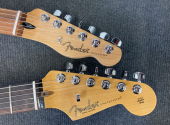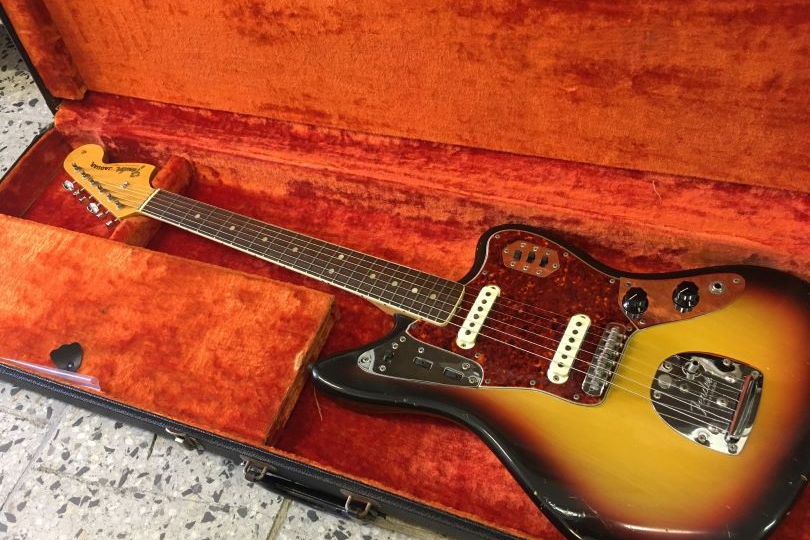
Under the Hood #16: Offset Guitar Fender
In addition to the traditional Telecaster and Stratocaster models, Fender started producing student guitars in the mid-1950s. They had a shorter scale, a different shape and differently assembled electronics. They were called offset guitars. These instruments were meant to be a launching pad for young guitarists. Eventually, they became popular with a significant number of guitarists around the world and they remained popular up to the present day. Let's take a closer look at them.
The idea of student guitars was very clever. When the first fully-fledged electric guitars arrived in the early 1950s and rock'n'roll began to spread, it revolutionised not only music itself, but also the musical instrument industry. Of course, guitarists first had to get used to the new models and accept them. And that always takes time. At the same time, not everyone could afford a new instrument and not everyone was comfortable playing on the standard scale used on the guitars on the market.
The Telecaster and Stratocaster models have been fully-fledged, professional guitars from the start of production. They had a standard 25.5-inch scale. Therefore, they were suitable for adult players. But market demand held many more possibilities. Young people, teenagers and students in particular also wanted to play. So Fender came up with the idea of student guitars, which was a stroke of genius at the time.
The main idea was clear: a young player or student would first start playing the student model, look up to the new idols playing Telecasters or Stratocasters, and then gravitate towards those instruments as well. The student guitars had a short scale (originally 22.5 inches, later 24 inches), which was more comfortable precisely for teenagers, students or beginners.
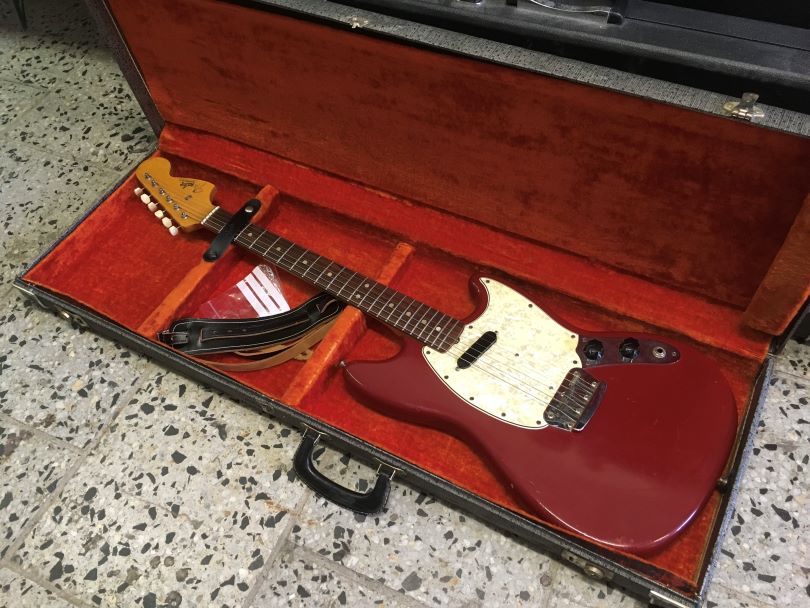
In other aspects, the student models had similar characteristics to the adult Fenders. They were lightweight, had the same pickups, were made of the same materials, and had similar neck profiles and similar fingerboard radii. So there was this great opportunity for a guitarist to start learning on a small Fender and later buy a big Fender.
The popularity of student guitars grew and new models, which were mostly improvements of the previous ones, were introduced. Customers had a lot to choose from and Fender subsequently promoted and produced the more popular models. Over time, the term offset guitars caught on for the original student models.

Design and Electronics of Offset Guitars
Apart from the shorter scale, the student/offset guitars differed from other Fender guitars (Telecaster, Stratocaster) primarily by their asymmetrical body shape with pronounced curves. It was an unusual, bold and attractive design, just as desired by a young generation of guitarists who were yet to learn how to play and who would dazzle the world in the years to come.
The shape of the body had one interesting advantage. Not only did it look good, but it also contained a lot of space for different electronic options. If we placed all the offset models next to each other, the evolution of the electronics would be obvious at a glance.
The Musicmaster had one pickup and two potentiometers to control the sound. The Duo-Sonic had an extra pickup and two pickup switches. The Mustang was upgraded with only a tremolo, while the electronics was the same as in the Duo-Sonic. The Jaguar had a separate electronic circuit for the neck pickup only, plus three more pickup switches. At first sight, it looks quite complicated. When it was launched, it must have seemed like something special. In my opinion, the Jazzmaster has the most elegant overall look and electronics. It's similar to the Jaguar but simpler. I will describe the individual models in detail in future articles.
It should be mentioned that the Jaguar and Jazzmaster models were intended to be fully-fledged instruments from the very beginning of production. Their design and construction place them among offset guitars, but they are not student models.
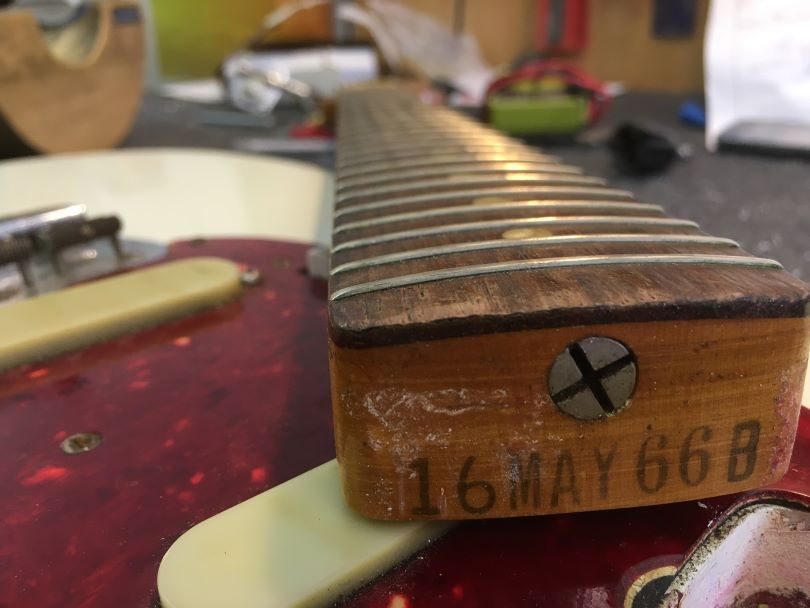
Quality of Original Offsets
Offset guitars are popular to this day and many guitarists play them exclusively. With shorter or longer breaks and various modifications, they are still being produced. But the old, original ones have far more charm. Why is that? Mainly because of their quality.
Student and other offset guitars were made from the same materials as Telecasters and Stratocasters. Fender's intention was clear: to produce quality models regardless of whether they were student or professional series. If the student guitars were not of good quality, guitarists might learn to play them, but it was hard to say whether they would later reach for a Fender again when choosing a full-size guitar. By that time, the iconic Gibson Les Paul was already on the market and for Fender, Gibson was the main competitor. That's why the student models were both high quality and cheap so that players would want to stick with Fender when choosing their next guitar.
From a historical perspective, this seems to be a rather trivial, but at the same time truly ingenious move. It should be noted that Gibson also offered simpler and cheaper models with a short scale, which weren't bad at all. Thus, the battle for future customers could begin.
At first glance, the Musicmaster and Duo-Sonic models do not give the impression of great quality. They are small and really simple and they were cheap. However, the body and neck materials were the same as in the case of the Stratocasters and Telecasters. The electronics consisted of the same components. The bridge and the bridge saddles differed in design, but the material was identical. The tuning machines had plastic ends but were otherwise the same as the other models. The pickguards were either aluminium or plastic, so they were the same materials as the other models too.
These are also the main reasons why these models are still available in perfect condition today. Thanks to the short scale, the necks are usually in very good shape. The quality can be appreciated even today, more than sixty years after the first production. The originals are available for a pretty good price.
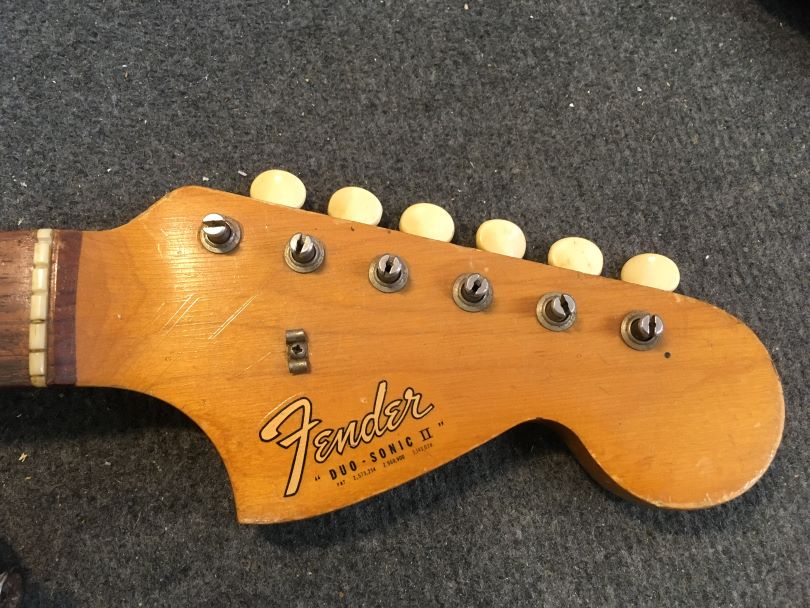
Popularity of Offsets and Reissue Series
In the 1950s and 1960s, the popularity of student and offset guitars was quite high, but it never reached the level of the mainstream models. This was due to their simplicity and especially their short scale. It was extended by a few centimetres in the 1960s, but it was still not full-size. Therefore, these models were not attractive to a large number of players.
On the other hand, many guitarists play these models exclusively. Thanks to the shorter scale and electronics, offset models have a distinctive sound that, while not very versatile, fits many musical styles.
In the 1980s, when Fender started producing reissue models, some offsets experienced a resurrection. In the 1990s, Kurt Cobain brought them to prominence, playing the Fender Jaguar and Mustang. In the late 1950s, Jimi Hendrix played a Duo-Sonic before switching to a Stratocaster. Nowadays, for example, Fender produces different variants of the Duo-Sonic, the appeal and playability of which you can try in guitar shops.
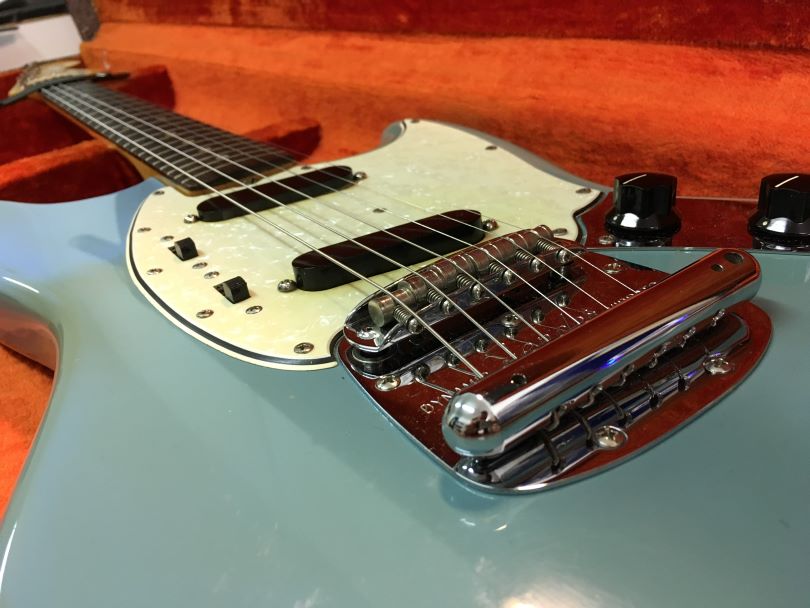
Playing the Offsets
Due to the short scale of most models, guitarists have to adapt to a smaller fretboard. The neck is usually narrower, especially at the zero fret. Neck profiles are similar to other models and follow the different eras of Fender guitar development. So the playing experience is different for everyone. For a guitarist with large hands and long fingers, it won't be particularly comfortable, but you can get used to it, of course. The shortest scale on the earliest models (22.5 inches) is rather child-friendly, so it suits the younger age group. The 24-inch scale is more comfortable, the distance between the frets is bigger and playing is more enjoyable.
I recommend using thicker strings, which make the guitars resonate more and which work better with a shorter scale. Smaller and asymmetrical bodies are comfortable for playing sitting or standing. Student models are lighter in weight and easier to handle. There are many shorter guitarists who love both of these short scales. The fingerboard radius on guitars from the 1950s and 1960s is 7.25 inches, so the fingerboard is very round. This also influences the playing experience on a short scale.
I can say from my own experience that offset guitars are very easy to play. It is important to find the detailed setup of the whole guitar matching your own needs. The width of the zero fret needs to be taken into account. The narrower it is, the smaller the spacing between the strings on the first frets. And that doesn't suit everyone. It's the first thing I'd recommend trying when choosing offsets. And one last little thing. The student models from the '50s and '60s are the cheapest Fenders from that era you can get today. So if you want to own a Fender from its golden era, you certainly won't go wrong with them.
If you have found an error or typo in the article, please let us know by e-mail info@insounder.org.


